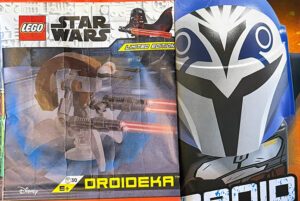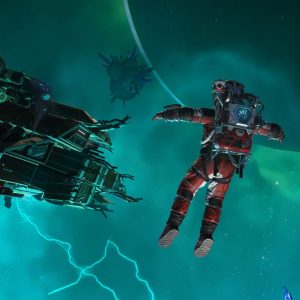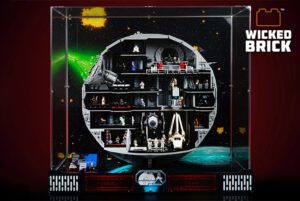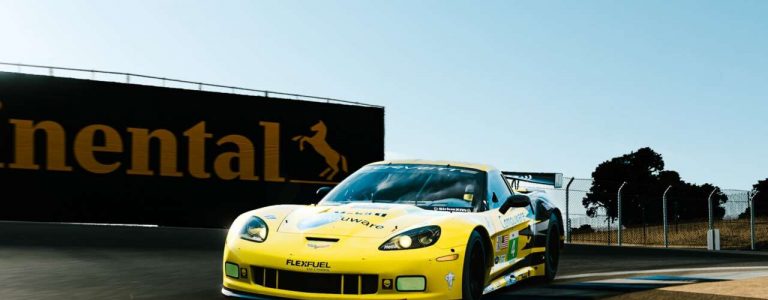
It wasn’t until the battle was underway that I realized I had a fifth character to control: my team’s giant heavily fortified and armed vehicle, named Kodiak. The huge armored behemoth was still parked not far from where I had begun my exploration, and took up a massive 5×5 set of tiles on the battle grid, and had its own set of action points to use. As my team moved to the left to take cover behind a watchtower, many of the post apocalyptic crazies I was facing had hunkered down by some barrels and barricades opposite from my car. Like any tactical genius, I put ol’ Kodiak into drive and used up every action point I could to move the mobile fortress to slam through the pathetic obstacles and straight into my enemies. They were instantly turned into red paste, much to my satisfaction. Kodiak also came equipped with its own mounted turret, which I used the next turn to plug an enemy who thought himself lucky to avoid getting bulldozed. It was a very fun experience, and highlighted some interesting ways to use the transport to my advantage either as defensive cover or an offensive ramming tool.
Of course, you won’t be able to use Kodiak to end every encounter so quickly. Once the fight was over, my party was forced to cross a narrow bridge and leave the hulking car behind, which then gave me interesting choices on how to proceed. Wasteland 3 feels like its as every bit a role playing game as it is a tactical shooter, and you’re able to choose how best to approach a scenario. I was able to take a path to the right into a heavily defended area which meant more prolonged firefights without my trusty armored car. Instead, I opted for a path to the left, which was entirely devoid of psychopaths, but instead littered with assorted traps and grisly displays of carnage from those who came before me. Navigating these traps relied on full use of Wasteland 3’s RPG mechanics – and by interacting with certain elements I was able to engage in lockpicking, disarming, and repairing with characters who boasted a high enough skill. Again, a streamlined system meant less hassle for me trying to find the right character for the job and look for the right abilities in tooltips. Just by clicking on the object, if a party member had the skills, they’d go for it. If one of my team failed to perform, it would have either meant taking a ton of damage, or backtracking towards hostile territory.
“
Eventually I came to the last trap, where several caged bears sat between me and the final encounter. Had I explored around enough, I could have located a valve for a gas line to explode the bears into little chunks, but instead I opted to fight them head on. Doing so was tougher than I expected, but also provided me with an unexpected surprise as I noticed a docile bear cub in the corner of the cage. I found that one of my rangers could tame the bear and send the little guy into battle, which could only have been possible if I didn’t blow them all up in the first place. Regrettably, the little bear never got to charge into battle on my behalf, as he was taken out by a poison gas grenade I was hit by only a few minutes later. I never even got to name the poor guy.

After retaliating by lobbing grenades, sniping gas tanks, and unleashing a powerful energy rifle I found looting some chests, I was finally able to take out the tough crazies guarding my target. It was nice to see the game try to seamlessly zoom right from exploration into a more cinematic conversation (the build was still in alpha so some stuttering was to be expected). At this point, speaking with the drugged up man known as Victory, I found that I had several ways to resolving the conflict. Shooting him in the face was on the table, but so was using my skills to try and find a peaceful way to convince him to join my team – but it required my characters to learn the right skills and attain a high enough level so that the dialogue options would succeed. I ended up trying to lie to him to get him to surrender, which backfired into a silly conversation that quickly turned deadly, only for Victory’s plan to backfire as well. Job well done?
Having all of the dialogue voiced went a long way into making these interactions a lot more entertaining, and the amount of pathways that one conversation with Victory included was a good indicator of how varied everyone’s playthrough could be, and I’m interested to see how my particular choices would affect my relationship with the people who gave me the task later on in the story.
Brendan Graeber is a Guides Editor at IGN, and now finds himself wishing he had a giant armored car to deploy in Fire Emblem: Three Houses. Chat with him on Twitter @Ragga_Fragga.

























